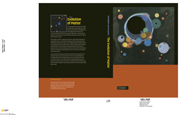Book contents
- Frontmatter
- Contents
- Introduction
- Part I The elements
- Part II Early solar system: nebula formation, evolution and lifetime
- Part III Accretion of the Earth
- Part IV Global evolution of the Earth
- 22 First look at the Earth
- 23 The plate-tectonic concept: some phenomenology
- 24 Ocean-ridge and island magmatism
- 25 Subduction and island-arc magmatism
- 26 Composition of the continental crust: magmatic, metamorphic and sedimentary processes
- 27 Isotopic records of the evolution of Earth's accessible reservoirs
- 28 Geochemical Earth model
- References
- Glossary
- Abbreviations
- Meteorites, rocks and minerals
- Index
23 - The plate-tectonic concept: some phenomenology
Published online by Cambridge University Press: 04 September 2009
- Frontmatter
- Contents
- Introduction
- Part I The elements
- Part II Early solar system: nebula formation, evolution and lifetime
- Part III Accretion of the Earth
- Part IV Global evolution of the Earth
- 22 First look at the Earth
- 23 The plate-tectonic concept: some phenomenology
- 24 Ocean-ridge and island magmatism
- 25 Subduction and island-arc magmatism
- 26 Composition of the continental crust: magmatic, metamorphic and sedimentary processes
- 27 Isotopic records of the evolution of Earth's accessible reservoirs
- 28 Geochemical Earth model
- References
- Glossary
- Abbreviations
- Meteorites, rocks and minerals
- Index
Summary
Major geotectonic units: the plates
Let us imagine that we observe the Earth from a remote point, for example from a satellite, and that the atmosphere and oceans are transparent and therefore we can see the whole solid surface of the planet (Fig. 23.1(a), (b)). The most intriguing features of this surface are long narrow zones or cuts, characterized by enhanced seismicity and heat flow and also by intense volcanic activity: volcanic exhalations are easily seen from our satellite. These narrow zones outline much “quieter” (aseismic and non-volcanic) regions, which cover most of the surface. Within the plate-tectonic concept the stable regions of the Earth surface are termed lithospheric plates and the active zones are plate boundaries (e.g. van Andel, 1992). Using the satellite-positioning system, we can observe that the plates move with relative velocities between 1 and 10 cm yr−1. The active zones separate plates that are moving in different directions. As discussed in Section 17.5, the largest terrestrial reservoir, the mantle, consists of solid silicate material convecting at the rate of a few cm yr−1. This is similar to the observed plate velocities, and the similarity implies that there is some relationship between the motion of the plates and the convection of the underlying mantle: the plates form the lid of the mantle.
The plates vary greatly in size (and therefore in the lengths of their boundaries), from ∼ 1000 km or less (Cocos, Corda, Fig. 23.1(b)) to more than 10 000 kilometres (Pacific, Antarctic, Eurasia).
- Type
- Chapter
- Information
- The Evolution of MatterFrom the Big Bang to the Present Day, pp. 293 - 300Publisher: Cambridge University PressPrint publication year: 2008



